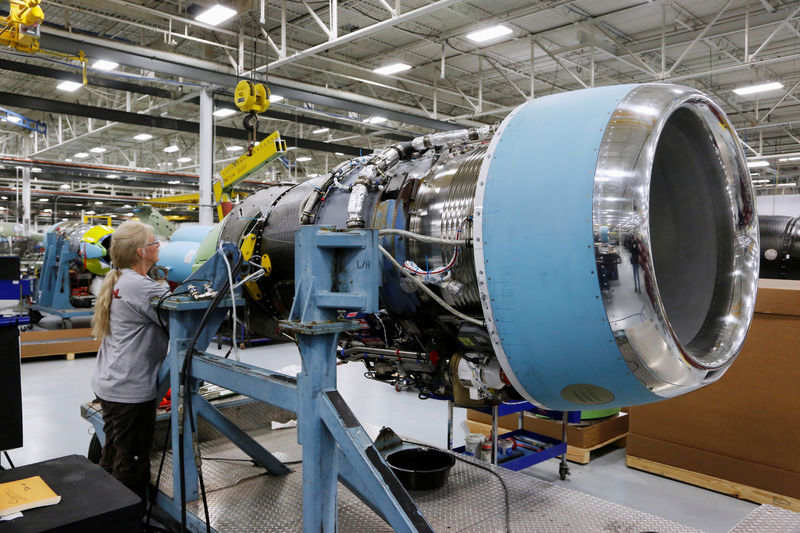By Lucia Mutikani
WASHINGTON (Reuters) - New orders for key U.S.-made capital goods slipped in February and shipments were unchanged, but data for January was revised slightly higher, which could support views that the manufacturing sector was stabilizing.
The Commerce Department's mixed report on Tuesday came on the heels of a survey showing a rebound in a measure of factory activity in March from a more than two-year low. Manufacturing has been hobbled in part by slowing global growth and a trade war between the United States and China.
"Manufacturing still needs a catalyst to lift activity levels and we think that will come once the trade deal with China looks to be ironed out," said John Ryding, chief economist at RDQ Economics in New York.
Orders for non-defense capital goods excluding aircraft, a closely watched proxy for business spending plans, fell 0.1 percent, pulled down by declining demand for machinery and computers and electronic products. These so-called core capital goods orders increased 0.9 percent in January, instead of rising 0.8 percent as previously reported.
Economists polled by Reuters had forecast core capital goods orders unchanged in February. Core capital goods orders increased 2.6 percent on a year-on-year basis.
Shipments of core capital goods were unchanged in February after an upwardly revised 1.0 percent rise in the prior month. Core capital goods shipments are used to calculate equipment spending in the government's gross domestic product measurement.
They were previously reported to have gained 0.8 percent in January. The February report was delayed by a 35-day partial shutdown of the federal government that ended on Jan. 25. The March report will be published on April 25 as scheduled.
U.S. financial markets were little moved by the data. The Institute for Supply Management said on Monday that its index of national factory activity rose to a reading of 55.3 in March from 54.2 in February, which had marked the lowest level since November 2016. The ISM reported strong order growth in March.
RISING INVENTORIES
While the strong ISM survey and the upward revisions to the core capital goods data were positive developments for manufacturing, some economists worried that a growing stockpile of unsold goods at factories could be a challenge for the sector that accounts for about 12 percent of the U.S. economy.
The Commerce Department report showed another month of inventory gains in February, which some economists said appeared to be unintended. The inventory glut is mostly concentrated in the auto and apparel industries.
"The combination of overbuilt inventories plus a widespread desire among manufacturing customers to reduce inventories adds up to an impending manufacturing slowdown," said Chris Low, chief economist at FTN Financial in New York.
Still, the core capital goods data added to February's retail sales report, solid construction spending and January business inventory data in tempering expectations of a sharp slowdown in economic growth in the first quarter.
Growth estimates for the first-quarter range from as low as a 1.2 percent annualized rate to as high as a 2.1 percent pace. The economy grew at a 2.2 percent pace in the fourth quarter, with growth in business spending on equipment accelerating.
The economy is losing momentum, largely as the stimulus from a $1.5 trillion tax cut fades. Fears of a disorderly exit by Britain from the European Union are also weighing on the economy and manufacturing sector.
In February, orders for machinery dropped 0.3 percent after rising 2.0 percent in January. Energy firms have been reducing the oil rigs operating, despite a rebound in oil prices, to focus on growing earnings.
Overall orders for durable goods, items ranging from toasters to aircraft that are meant to last three years or more, tumbled 1.6 percent in February. That reflected a 4.8 percent drop in demand for transportation equipment. Durable goods orders gained 0.1 percent in January.

Orders for motor vehicles and parts dipped 0.1 percent in February. Orders for non-defense aircraft plunged 31.1 percent after rising 9.2 percent in January. Boeing (NYSE:BA) reported on its website that it had received only five aircraft orders in February compared to 46 in January.